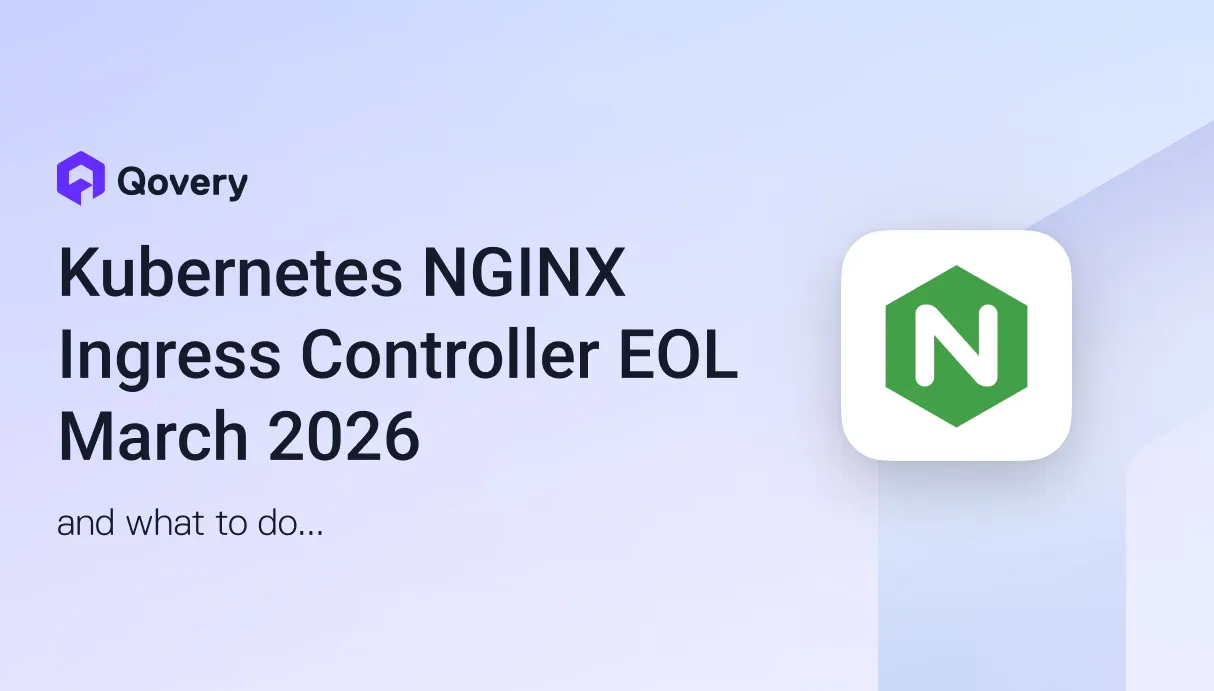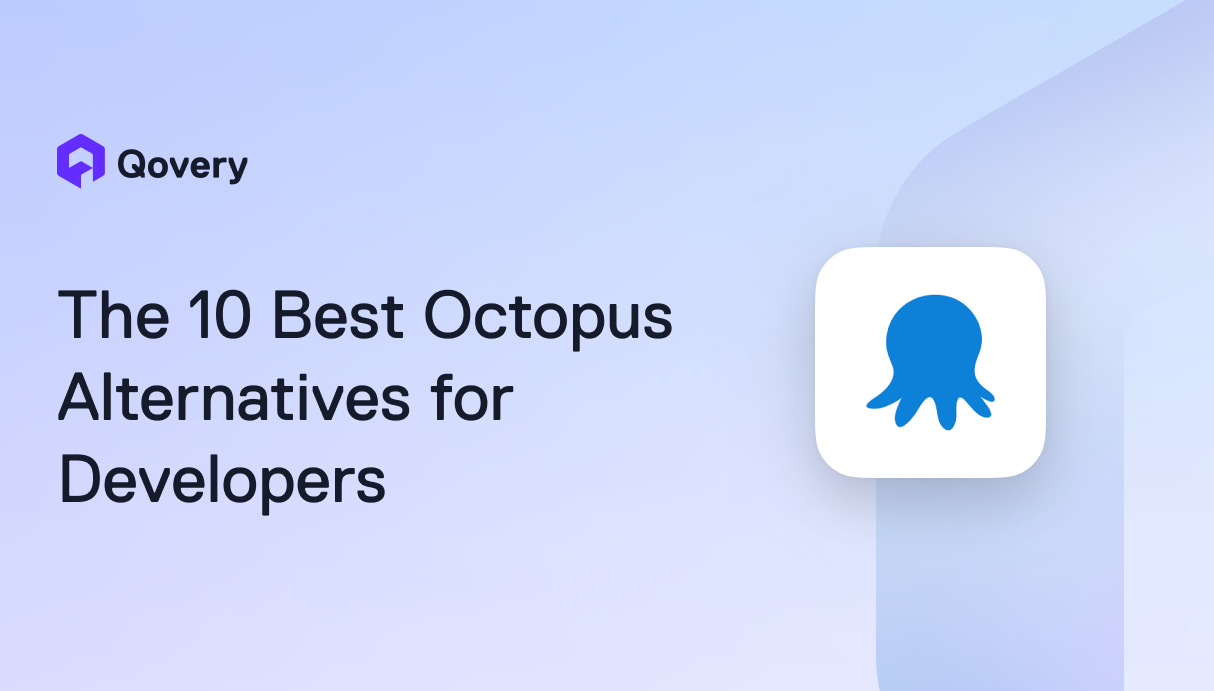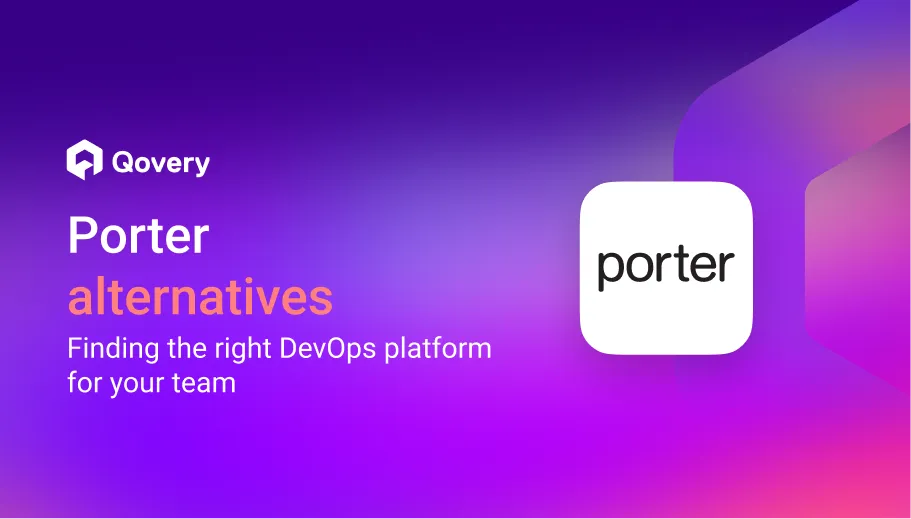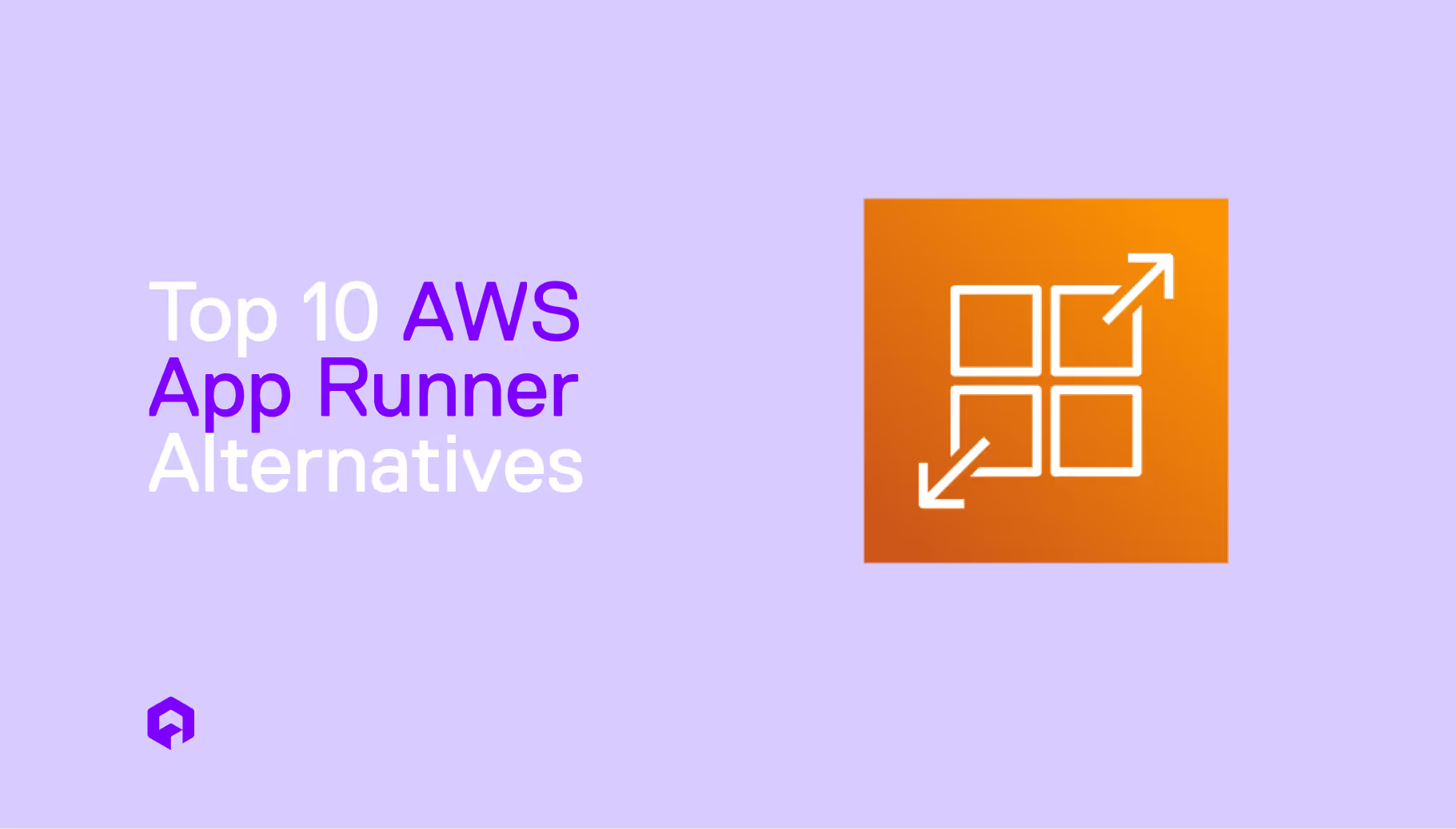

From AWS EKS to AWS EKS with Qovery - 6 Reasons Why This Startup Migrated



6 Reasons Why This Startup Migrated From EKS to EKS with Qovery
1. No More EKS Upgrade
Despite being an AWS expert, the CTO wanted to free up time for more strategic work and ensure the infrastructure remained best-in-class. Qovery, as an ISV AWS Accelerate Partner, fit the bill perfectly. Qovery’s managed EKS service takes care of everything: cluster upgrades, patch management, and overall maintenance.
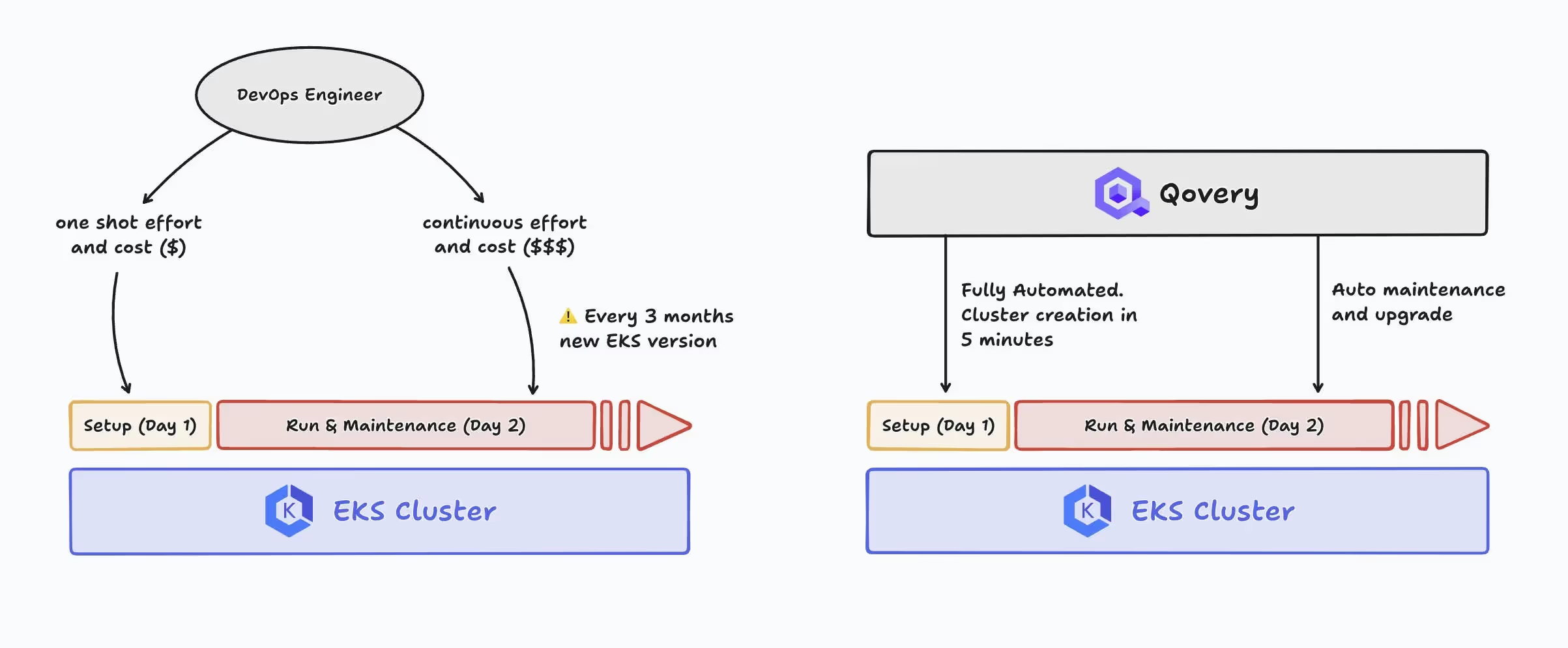
By choosing Qovery, the startup got a state-of-the-art infrastructure running on AWS, without the hassle of managing it themselves. It’s like having a fully automated, always up-to-date EKS setup handled by a dedicated team.
Qovery can also be installed on their existing EKS cluster, but in that case, we can't provide day-2 management (yet). So, their preferred choice was to migrate to our managed EKS cluster running on their own cloud account.
2. Give Autonomy To Software Engineers
As the software engineering team grew, the CTO needed to strike a delicate balance: give developers the autonomy to deploy and manage their own services while maintaining control and security. Qovery’s Role-Based Access Control (RBAC) and Audit Logs made this possible. Software engineers could operate independently without risking security compliance or governance standards, and the CTO could still have oversight whenever needed. Qovery’s tools ensured that security wasn’t compromised even as developer autonomy increased.
3. Best-in-Class IaC
For this CTO, Infrastructure-as-Code (IaC) was non-negotiable. Having previously managed their AWS infrastructure using Terraform, they needed any new solution to seamlessly integrate with their IaC workflows. They were sold when they discovered that Qovery had an official Terraform Provider.
Everything that could be configured through Qovery’s web interface could also be automated and managed via Terraform. This meant the company could continue leveraging their existing Terraform expertise while taking advantage of Qovery’s streamlined infrastructure management.
4. Effortless Future Scaling
Scalability was another key factor. The company wanted to keep open the option of spinning up additional EKS clusters as they expanded, without worrying about the maintenance and complexity that comes with it.

Qovery’s platform made it easy to launch and manage new clusters in the future. With Qovery handling the heavy lifting, adding new clusters won’t require additional DevOps resources, saving both time and money.
5. 10x Cheaper
The final, and perhaps most compelling, reason boiled down to cost. Hiring a full-time DevOps Engineer in NYC, with a complete package, would have set them back around $220k per year. By comparison, using Qovery was roughly 10 times less expensive.
The choice was obvious: Qovery offered a cost-effective alternative that allowed the company to delay their DevOps hire while still scaling their infrastructure seamlessly. For a startup looking to be efficient with their funding, it was a no-brainer.
6. Hassle-Free Migration
One of the reasons this migration was so fast and smooth was because the company was already using Helm Charts to manage their Kubernetes workloads. Qovery not only supports Helm Charts natively but also takes their management to the next level.
With Qovery, the company could easily leverage environment variables and secrets directly in their Helm deployments, simplifying configuration management. Additionally, Qovery offers native GitOps support for Helm values files, allowing them to version and manage their infrastructure configurations alongside their application code. This streamlined their workflows and ensured consistency across environments.
Thanks to Qovery’s seamless integration with Helm, the entire migration process was completed quickly, allowing the team to focus on delivering value rather than troubleshooting infrastructure issues.
So What?
Migrating from AWS EKS to AWS EKS with Qovery might seem unconventional at first, but for this growing startup, it made perfect sense. By using Qovery, they maintained their AWS-native setup, empowered their software engineers, guaranteed infrastructure security, and achieved significant cost savings. The transition has not only prepared them for future growth but also freed up their CTO to focus on innovation rather than maintenance.
If you’re in a similar position, facing the challenge of scaling infrastructure efficiently while keeping costs down, it might be worth exploring a solution like Qovery. Sometimes, the best upgrade isn’t about switching platforms but optimizing how you use the one you already have.

Suggested articles
.webp)



.svg)
.svg)
.svg)
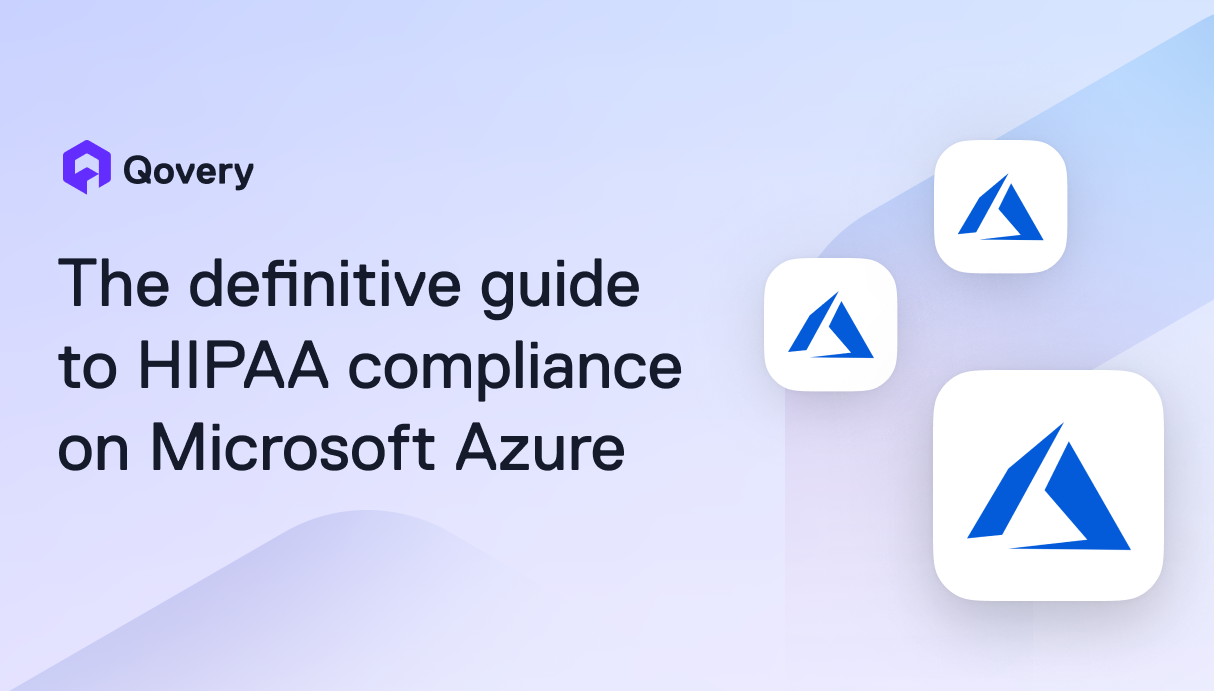


.png)
